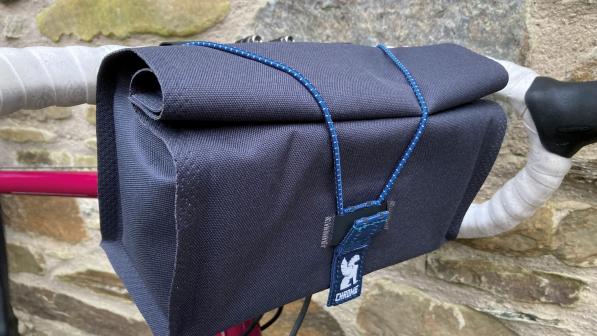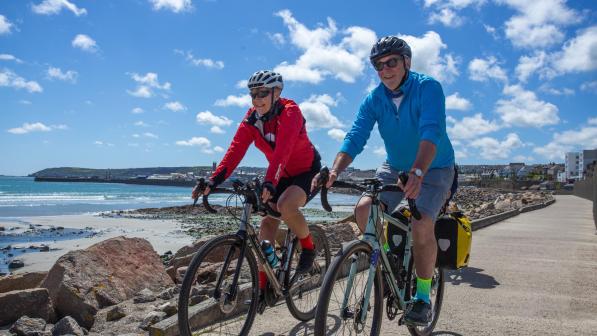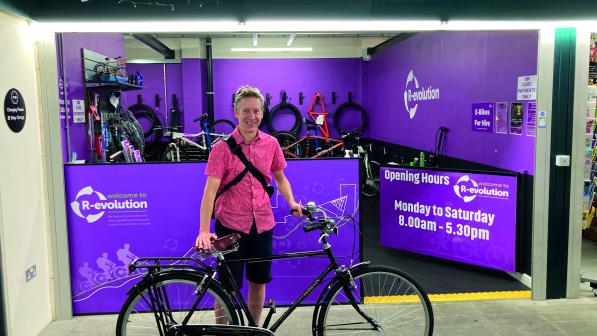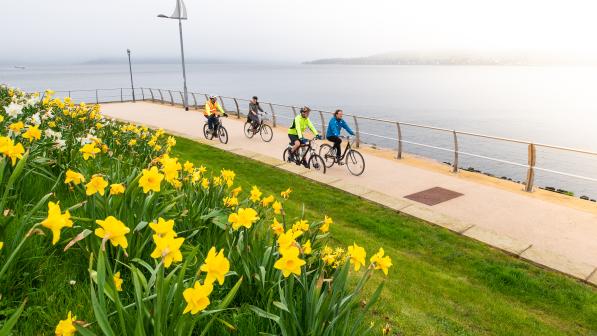Can you buy quality cycling gear for less?

Have you ever noticed that things seem to be much more expensive as soon as the word ‘cycling’ is added to them? And that, even amongst cycling-oriented products, there’s a huge range in cost between budget and luxury brands? With the cost-of-living crisis putting pressure on everyone’s budgets, I went in search of the things that defy the adage that you get what you pay for.
I’ve collected money-saving tips from experienced cyclists, industry insiders and the magnificent hive mind of the Cycling UK forum. Prices quoted are what you can expect to pay if you shop around. (Online search engines are invaluable.) But I’ve also included manufacturer websites so you can read more about the products mentioned.
Clothing
For most recreational and utility cyclists, there’s little need for cycling-specific clothing. What that works well for general outdoor activities will usually work well on the bike: lightweight, fast-drying fabrics with a bit of stretch to accommodate movement. Cycle editor Dan Joyce rides in Craghoppers Kiwi Pro shorts (from £45), while I’ve found that Simond knee-length stretch-cotton bouldering shorts from Decathlon (£24.99) are durable and comfortable. Ronhill’s classic Tracksters (£23) have a looser, less figure-hugging fit than most cycling tights, and double up for running, hill walking and climbing. They last forever.
Merino wool is lightweight, insulating, moisture-wicking and has natural antimicrobial properties that neutralise odours. The only real downside is the price – and the susceptibility to clothes moths! But there are deals out there. Decathlon uses merino that’s traceable to South African farms where the harmful practice of ‘mulesing’ sheep is forbidden. I’ve found the Forclaz Travel 100 T-shirt (£21.99), long-sleeve top (£39.99), buff (£12.99) and beanie hat (£12.99) are on a par with the premium brands.
Cycling activist Sally Hinchcliffe singles out Aldi’s merino thermal tops and long-johns, which come and go from the ‘middle aisle’. Chris Juden, former Cycling UK technical officer, swears by Marks and Spencer’s 100-denier merino-blend ladies’ tights (£10) for adding extra warmth to cycling tights. He cautions that as they’re designed for women, long-legged men need to size up.

A lightweight synthetic down jacket is a great way to keep warm on winter rides or in cool evenings when touring. Bikepacker James Olsen, founder of the Torino-Nice Rally, sings the praises of both Decathlon’s Forclaz MT100 hooded jacket (£34.99) and the MT100 sleeveless gilet (£24.99), which he “wears all the time”. A common selling point for cycling-specific clothing is reflective detailing, but it’s possible to add this to any garment with strips of reflective tape. Sew-on and iron-on varieties are available from eBay sellers.
Everyday shoes with a rubber sole and flat pedals are a good choice for most people. Crocs are surprisingly useful as spare shoes – or if you have to ride through a rainstorm or cross a river. Lightweight cyclist Igor Kovse did a 3,500km ride in crocs. In the winter months, walking boots are warmer than winter cycling shoes. Cycle editor Dan Joyce found that rubber-and-neoprene Hayton ankle boots, paired with thick socks, “are as good as any ‘proper’ winter mountain bike boots I’ve tried” (£32.99). He recommends using them with larger flat pedals only.
Neoprene gloves designed for water sports are well worth trying if you suffer from cold hands. Lomo has a range in varying thicknesses (from £11). More low-cost alternatives for deep winter are ski gloves from Aldi and Lidl, and thick wool Army surplus gloves and mitts, such as Swedish Army wool mitts (£2.50). Simon Warren, author of the 100 Greatest Cycling Climbs series, suggests site/workwear gloves, the kind with a rubberised palm and fingers and a breathable fabric backing, which cost just pound or two. There is a huge selection online, including waterproof and thermal varieties.

For race-fit Lycra clothing, Galibier, based in Northern Ireland, has built a word-of-mouth reputation for high-performance kit at a fraction of the cost of brands like Castelli, Rapha and Le Col. Their best-selling garment is the highly packable, ultralight (154g) Tempest 2 rain jacket (£59.44). As a tall man with long arms, I found the fit and sizing of tops to be hit and miss but the customer service is responsive and there’s a no-quibble 30-day returns/exchange policy.
Online retailer Wiggle’s DHB range is well-liked and competitively priced. Cycling UK’s head of communications Laura Mason likes Decathlon’s Van Rysel cycling range. She says the women’s warm weather cycling base layer (£9.99) is “just as good” as a premium brand’s £50 version. Uniqlo’s Heattech and Airism base layers are the equal of many cycling-specific ones and cost around £10-£15. If domestic manufacturing is important to you, Lusso makes all its well-regarded and competitively priced road cycling kit in Manchester.
Clear-lensed safety glasses are a cheaper alternative to cycling-specific eyewear.
Parts and accessories
Thanks to advances in LED technology and rechargeable batteries, bike lights are better and brighter than ever. Too many bike lights indiscriminately blast photons into the eyeballs of other road users. The solution is a light with an internal mirror that focuses and shapes the beam so that light falls onto the road without dazzling oncoming traffic.
The USB-rechargeable Lumos Pro (£19.95) provides enough light to ride on dark country lanes and has a run time of two to three hours on full power and more than twice that on the ‘eco’ setting. The Detake 1200 Lumen front light (£16.99) casts an even wider, though less uniform, beam. The 2400 mAh battery lasts for an impressive three to four hours on full beam and six to seven on the lower setting, which is still plenty bright enough to ride on dark country lanes. Both are powered by built-in USB-rechargeable lithium ion batteries of unknown provenance. This is the probably the main drawback compared to top brands, which tend to source high-quality cells.

Amongst rear lights, the Smart Superflash 317 (£11.99) is ultra reliable, puts out plenty of light and runs for up to 60 hours on a pair of AAA batteries. In this day and age, nobody should be using disposable batteries. Ikea’s LADDA rechargeables are excellent value (AAAs £5 for four, AAs £7 for four; a charger is £5).
Pedals take a lot of punishment and cheap ones can be awful. Yet there are a few diamonds in the rough. A favourite flat pedal on the Cycling UK forum is the Wellgo LU987U (£11.99). A step up in quality is the original DMR V-8 (not the v2) which has improved seals and a grease port (£43). MKS makes highly durable pedals that are fully user serviceable thanks to cup-and-cone bearings. The Comfort Lite Commuter Pedal (£19.99) is flat, sturdy and its resin platform has no sharp bits, making it ideal for a town bike.

Microshift gear shifters, mechs and cassettes provide an inexpensive option to keep 7, 8, 9 and 10-speed systems running in the face of pressure to move to more expensive 11 and 12-speed. Mechanic and educator Jenni Gwiazdowski, director of London Bike Kitchen, argues for “upgrading with a downgrade” to 8-speed using Microshift components. Amongst chains, Richard Hallett regards KMC’s X series as the best value in terms of cost/durability.
When it comes to stopping, cheap can mean ‘less effective’. But not always. According to James Olsen, “Clarks disc brake rotors are far cheaper than most options and work great”.

Tyre prices have been relentlessly creeping upwards. Top audaxer Steve Abraham, whose day job is as a food delivery rider in Milton Keynes, thinks Vittoria Randonneur tyres are a good utility tyre (£10-£20 depending on width). James Olsen is impressed by Continental Ultra Sport III in 28mm for light touring (around £15), while veteran bike mechanic Ninon Asuni recommends hard-wearing Panaracer RiBMo (sizes up to 32mm), which can usually be found around the £20 mark.
Tubeless tyres are rarely a low-cost option. Yet some savings are possible. OKO sealant for wheelbarrow tyres, diluted 2:1 with water to reduce the viscosity, is reportedly effective. James Olsen uses artists’ latex as a sealant, diluted 60:40 with water. Some people add ammonia to the mix to increase the lifespan, and a little coarse cornmeal to make it more grainy. Tesa 4289 tape is a fraction of the price of branded tubeless tape (from £7.67 for a 66m reel). Riderace tubeless tyre worms are available on the AliExpress marketplace for about £3 for 30, including postage to the UK. Just be sure to get the slimmer kind; the fatter ones are designed for car tyres. Bill Hulley uses Loctite Powerflex, a rubberbased glue, to mend any tyre cuts and nicks that fail to self seal. It’s available in tiny 1g tubes that are ideal for a bike tool kit (three for £2. Others report success with E6000 and wetsuit repair glue.
Food and drink
The basic requirements for cycling food are that it’s energy dense, physically robust and palatable. There’s a broad consensus amongst the audax/long-distance cycling community around a handful of items that are the equal of expensive sports nutrition products. Fig rolls, chocolate milk, dried fruit, malt loaf and jelly babies are all firm favourites. Lidl and Aldi sell raw fruit-and-nut bars that are much cheaper than similar sports energy bars.

Scottish cycling ace Graeme Obree fuelled his training rides with cheekfuls of marzipan, which he says combines fats and carbs in just the right combination. He ate tinned sardines on toast as a protein-rich, post-ride recovery food. Cycle technical editor Richard Hallett’s go-to touring fuel are “bricksized cakes (usually madeira or coffee) that cost £1-£2 in a local supermarket and are good for 100 miles”. Rather than buying energy drinks, you can make your own electrolytic sports drink by mixing 500ml of orange juice with the same amount of water and adding half a teaspoon of salt.
Tools and maintenance
Jenni Gwiazdowski says she can’t imagine life without reusable cable ties. They have many uses, from securing a bike when travelling by train, to emergency hacks and bodges to keep you on the road. They cost £5 for 100. Voile straps were originally designed to bind skis together, but the tough stretchy polyurethane straps are popular amongst bikepackers for securing any number of objects to a bike (from £8 each). Traditional nylon toeclip straps are a cheaper, though non-stretchy alternative. Zéfal Christophe 515XL are 44 cm long and can be daisy-chained (£4 a pair).

Car maintenance products can be substituted for many higher-priced, bike-specific products. LHM+ hydraulic brake fluid is half the price of Shimano’s own kind and works on other hydraulic brakes that require mineral oil. Carlube 100+ aerosol semi-fluid grease is good for lubricating awkward-to-reach places like the internals of STI shifters. A big 500g tin of lithium car grease is cheaper than small tubes of bike-specific grease for headset and hub bearings. The same goes for copper anti-seize for bottom bracket and pedal threads.
If you use a degreaser for cleaning your drivetrain, Screwfix’s ‘No Nonsense’ degreaser costs £11.99 for a 5-litre bottle. It’s potent stuff so dilute it 1:1 with water, wear gloves and dispose responsibly. Isopropyl alcohol (IPA) sold at pharmacies is an effective cleaner for braking surfaces on both disc and rim brakes. It is also available in wipes (£2.78 for 100 on eBay), and they double up as disinfectant wipes.
Touring and cycle camping
The initial outlay for a multi-day cycle tour can easily mount up, especially if you’re equipping yourself to camp along the way. Tortec’s Tour Ultralite is rated to 25kg and has a five-year guarantee (£29). With cheaper panniers it’s prudent to choose those that hang from a fabric panel rather than relying on potentially poor quality fixing hardware. Laura Moss, founder of the Cycle Touring Festival, says she “used a pair from Argos which cost £20 for my first few tours and for years for commuting”. The ETC Double 600D Pannier set is £22.99. Keep the rain out by lining them with heavy duty bin bags.
Tents, sleeping bags and sleeping mats conform to Keith Bontrager’s famous maxim: “Strong, light, cheap – pick two.” The Vango Cairngorm 200 is a palace for one, weighs 2kg and can be found for under £150; the larger, 2.6kg Cairngorm 300 (£225) is a better bet for two people. Chinese manufacturers Naturehike and 3UF get good reviews for their lightweight tents, several of which have more than a passing resemblance to popular models by high-end brands like MSR, Big Agnes and Tarptent.

For bivvying, Army-issue Goretex bags are a great deal (around £20-£30). Lomo sells a 3×3m bushcraft tarp set for £25 (poles not included). Tyvek Housewrap is a light and waterproof material that’s perfect for tarp and tent groundsheets (£3.75/metre). I’m a fan of closed-cell foam sit mats. They’re a lightweight luxury when camping. Lomo's costs £1.99. They also sell an extra large (80×160cm, 265g) microfibre camping towel (£9.98) and 750ml bike-fitting water bottles for £2.50.
A sleeping bag is one product where I think it’s worth spending as much as you can afford. Alpkit and Decathlon sleeping bags and inflatable mats strike a good balance between the most expensive premium brands and discount products that are likely to disappoint. Both companies observe the Responsible Down Standard and will stand by their products in the event of a problem. Snugpak Softie 3 and 6 are good value British-made synthetic bags (£112).
To boil water for hot drinks and simple camp food, a meths burner is lighter, more robust and cheaper than gas canister stoves. They can be fabricated from drinks cans and cat food tins (Zen Backpacking Stoves is a comprehensive resource). More refined designs are available from small UK cottage-industry makers. Bear Bones Bikepacking’s superefficient 22g meths stove is £18; a conical windshield is extra, from £7.95. A simple meths burner and titanium windshield and pot stand is available for £9.99.
Technology
A smartphone is a pocket computer that can perform all the functions of a cycle computer, once equipped with the right apps. Cycle.travel is a free app that offers top-notch mapping and reliable route finding and navigation (including satnav-style turn-by-turn directions). If you have a GPX file of an existing route that you want to follow, BikeGPX is another free app that does this one job really well. Organic Maps is a free open source mapping app with a commitment to user privacy and minimising the drain on your phone’s battery.

There are various handlebar and stem mounts available. The Spigen Gearlock (£17.99 on Amazon) is a good, lowercost alternative to the market-leading Quadlock. USB powerbanks are handy for keeping rechargeable lights and other electronic devices topped up on longer rides. The Charmast 10400mAh USB-C powerbank (£17.99) scored well in tests on Ultralight Dandy and it can charge three devices simultaneously.
Ethical shopping
Many of us want to make more ethical shopping decisions but the lowest prices often come from volume retailers who use their size and buying power to drive down costs, which might be at the expense of employees and/or the environment. That’s not a given, however, and conversely it’s possible that the high price of a premium product is a result of branding rather than improved production methods. Manufacturers who have strong environmental and ethical policies aren’t shy about sharing this information, whatever market they’re in, so see what they say on their websites.
Any saving you do make on mass-produced ‘commodity’ products means more to spend on what matters most to you. Sometimes you need the real deal. In Spa Cycles and St John Street Cycles, the UK is blessed with two great touring-orientated bike shops that keep a vast inventory of otherwise hard-to-find products and parts. Sending cash their way ensures they’ll still be there when you need them next. And there are smaller-scale domestic manufacturers like Scotland’s Trekkertent, Yorkshire’s Restrap, and London’s Wizardworks whose offerings might be exactly what you want.
It would be remiss to finish without noting that the biggest savings – for your wallet and the world’s limited resources – come from buying secondhand. But that’s another article.



